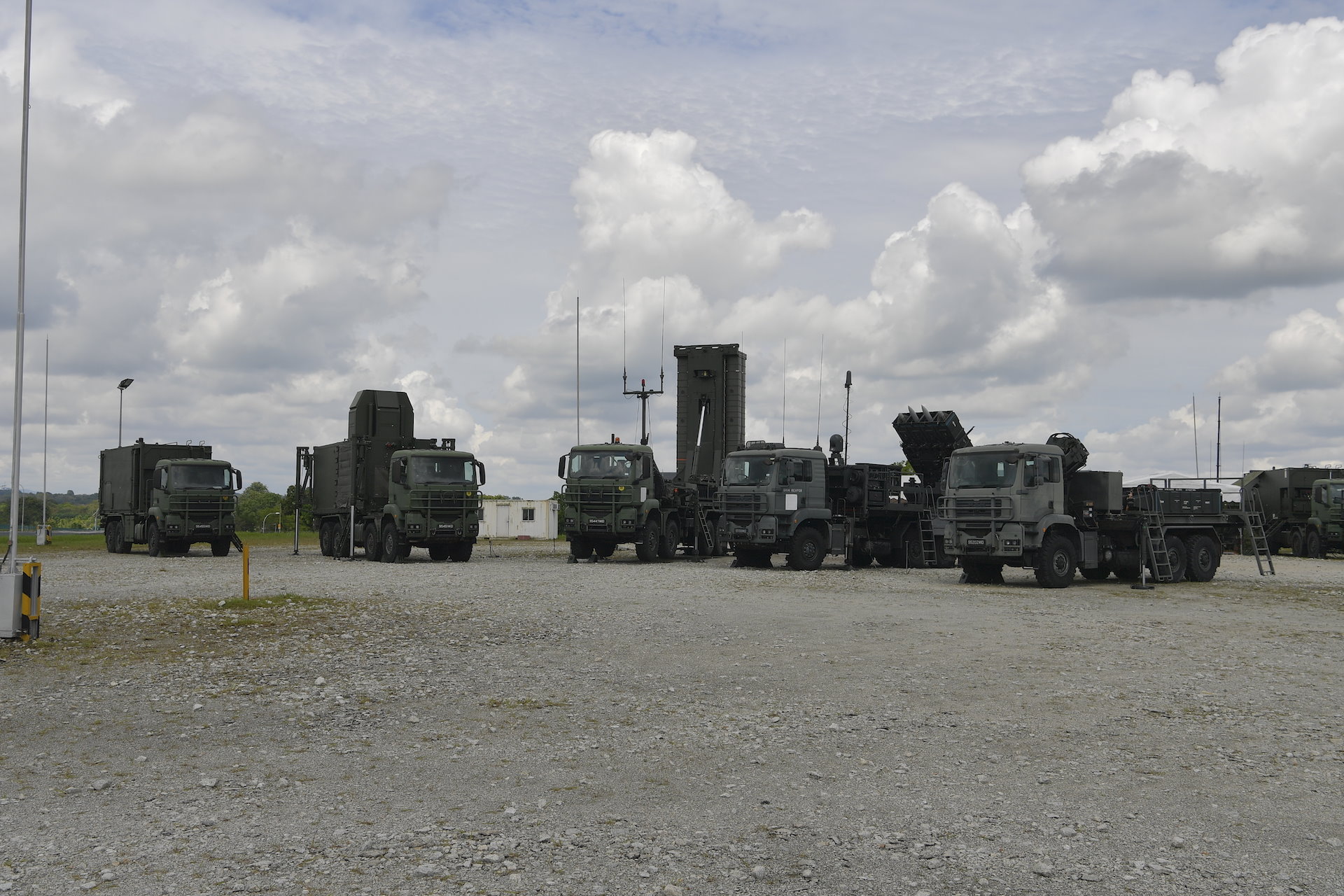ISLAND AIR DEFENCE SYSTEM SEES MORE, SHOOTS FURTHER
THE REPUBLIC OF SINGAPORE AIR FORCE (RSAF) HAS IMPROVED ITS ISLAND AIR DEFENCE (IAD) SYSTEM, WHICH CAN NOW DETECT NEW TYPES OF AIR THREATS, AND ENGAGE TARGETS FURTHER THAN BEFORE.
//Story by THRINA THAM //Photos by CHUA SOON LYE
The Republic of Singapore Air Force (RSAF) has improved its Island Air Defence (IAD) System, which can now detect new types of air threats, and engage targets further than before.
The IAD is an island-wide networked system that brings together sensors, weapons systems, and decision-making tools to strengthen Singapore's air defence. As part of efforts to maintain Singapore's edge in air defence, the RSAF integrated key components such as the Multi-Mission Radar (MMR) and the Aster 30 Missile System (Aster 30) which began 24/7 operations in August this year.
Speaking at a demonstration of the IAD System on 17 Dec at Lim Chu Kang Camp II, Minister for Defence Dr Ng Eng Hen noted: "We are now able to see much further and respond to targets much further away…We are able to do this with much less manpower because many of the systems are automated across the whole supply chain."
He added that the IAD System is well suited to serve the RSAF for the next few decades.
"It's using advanced systems which are state-of-the-art at this point of time and also compatible with what our needs and our assessment of threats are.
"So, I would say that it's not only a robust system from individual components, but it's a multi-layered system. If one layer fails, the next layer backs up."
Eyes & muscles of air defence
The IAD System uses its eyes (sensors) and its muscles (missile systems) to detect and take out threats.
Having sensors such as the MMR integrated into the system allows the air force to see more, said Colonel (COL) Loh Woon Liang, who commands the RSAF's Air Defence Group.
The MMR is an air surveillance mobile radar with a detection range of up to 350km.
"(This) allows timely detection of all kinds of air threats, whether it is unknown aircraft, air-launched munitions or unmanned aerial vehicles," said COL Loh.
Operating the "muscle" is Aster 30 operator 3rd Warrant Officer (3WO) Thiyagaraj S/O Subramaniam, who said that the platform, which replaced the I-HAWK system, was more automated and had a more efficient deployment process.
"It's much easier for the operators on the ground to deploy the equipment…(And being) part of the IAD gives you confidence that your mission will never fail because we are part of this established, potent system," said the Air Defence Systems Specialist.
Watch the Aster 30 crew deploying the missile system at Lim Chu Kang Camp II as part of a drill!
Nerve centre of the IAD
At the nerve centre of the IAD System is the smart Combat Management System (CMS), which was designed and developed by the Defence Science and Technology Agency (DSTA).
After collating data from the sensors, the CMS compiles and analyses it to provide operators with a real-time situational picture. It then goes on to prioritise targets and, together with the smart Decision Support System that recommends the weapon system most effective in engaging the different air threats, help to speed up the decision-making process.
"This reduces the cognitive load imposed on the operator (and allows) for faster decision-making," said Lieutenant Colonel (LTC) Germaine Lim, who operated on the CMS as an Air Warfare Officer.
Data analytics and artificial intelligence technology were incorporated into the CMS to allow more effective responses to threats.
Such technology teach the system to track and classify different types of threats through the use of simulations, said DSTA Senior Programme Manager, Mr Teng Siang Loong.
"We also worked very closely with operators, even from the coding (stage) – we would invite them to the lab to run through the codes, and take in their inputs to make sure our algorithm is robust against all kinds of scenarios," he added when elaborating on the work then went into developing the CMS.
While the system is better than before today, Dr Ng noted: "Even as we have finished this phase, we will look towards the next phase of the IAD System…to threats that are not only on the horizon, but (which) I'm sure will be developed over the years."










